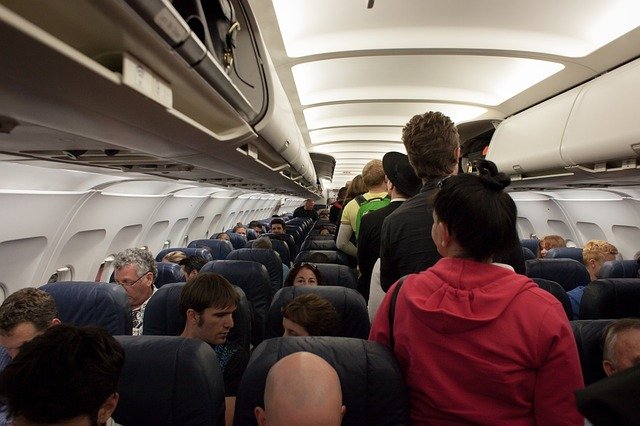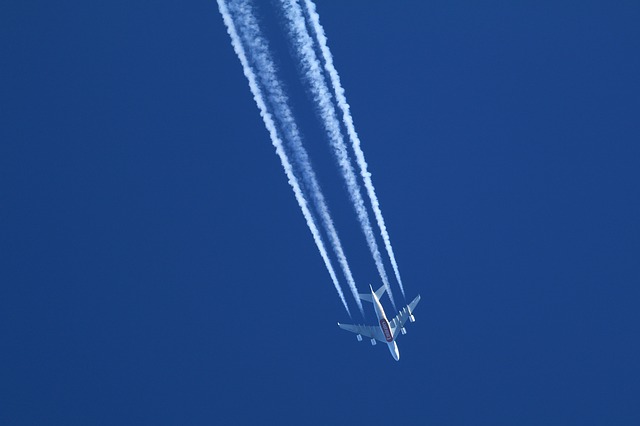LESSENING THE IMPACT OF FLYING ON THE ENVIRONMENT
Perhaps one good thing that has come out of the COVID-19 pandemic is the chance to reflect on how we live our lives and how we want to ensure our world can thrive and survive.
“Since we can’t do a lot of travelling right now, it’s a good time to take a step back and see how travelling affects our world – especially how air travel contributes to climate change,” says Allison Frame, co-founder of the Divine Destination Collection.
According to Helen Howes – a Divine Destination Collection traveller, who is a biologist and expert on sustainability, and served as Managing Director, Safety, Health & Environment for Delta Air Lines from 2009-2015 – progress is being made to make flying more sustainable, but not every airline is the same.
“A lot depends on size of the airline and ownership. Government regulation, shareholders, customers, and employees drive the sustainability agenda at airlines,” says Helen. “You would not expect an ultra-low cost carrier to have the same sustainability program as a larger, shareholder-owned airline.”
Sustainability programs range from in-flight recycling, recycling of leather from the seats, reducing noise, managing waste, and contributing to social programs in the cities where they fly, to addressing employee diversity, and improving biodiversity. Most airlines produce an annual social responsibility/sustainable development report so you can check out what they are doing before you fly.





Cutting CO2 Emissions
Working with airlines and other stakeholders, the International Civil Aviation Organization, which regulates non-military aircraft, is addressing climate change with the 2018 approval of the Carbon Offsetting and Reduction Scheme for International Aviation (CORSIA).
CORSIA is a global market-based measure for aviation emissions from international flights, where airlines and other aircraft operators will have to buy emissions reduction offsets from other industries to compensate for any increase in their own CO2 emissions above 2020 levels. The medium-term goal is to make all growth in international flights after 2020 “carbon neutral.”
Canada’s largest airline, Air Canada, is one of 290 members of the International Air Transportation Association (IATA) which is committed to cutting CO2 emissions in half by 2050 through developing new technologies (including sustainable aviation fuels), more efficient operations, better use of infrastructure, and global market-based measures such as CORSIA. There are also short-term and medium-term goals.
Helping the bottom line
But it turns out cutting emissions is not only good for the environment, it helps the bottom line.
“All airlines focus on fuel efficiency of their operations because fuel makes up roughly 30% of an airline’s operating costs,” says Helen. To save money on fuel there are a number of things airlines are already doing, such as matching the right aircraft to the right routes (i.e., short haul aircraft on shorter routes), reducing weight on flights, and purchasing more efficient aircraft.
For example, Delta is retiring several fleets of inefficient aircraft over the next five years. “It’s called being sent to the desert, and it is highly unlikely that the aircraft will come back into service,” says Helen.
Many aircraft such as Air France’s new Airbus have aerodynamic tips on the wings of their aircraft, which are called “sharklets.” These upturned wingtip extensions save fuel by reducing drag. Boeing has a similar technology called “winglets.”
Airlines are also cutting down on fuel by reducing the weight of everything onboard, from seats and audio-visual equipment, to replacing heavy pilot manuals with tablet computers.
“Delta got rid of their duty-free magazines, which they found weren’t being used. They also replaced the old AV equipment on the backs of seats with lighter AV equipment and put in lighter seats. They reduced the weight of the service carts, and streamlined the number of foodservice items they offered. If no one was buying it, then it was cut,” says Helen.
Other ways to save fuel include working with air traffic controllers to improve routing, using innovative software to avoid bad weather, and being able to land closer to the gate to cut down on taxi time.
Even the way the pilot descends onto the runway can make a difference, says Helen. “A continuous descent, instead of a stepped descent to the next level, which involves engine power rising then falling, has a significant effect on fuel consumption.”
Airlines also make sure the outside of their aircraft is clean. The cleaner the airplane, the less dust and dirt to create drag. “A clean airplane is a happy airplane,” laughs Helen.

Sustainable fuel
There is also the potential to reduce CO2 emissions through the use of sustainable aviation fuels.
Some airlines such as Virgin Atlantic, KLM, British Airways, Cathay Pacific, and United Airlines have been real pioneers in the use of sustainable aviation fuel by operating flights with a blend of sustainable aviation fuel, and are now investing in companies that produce sustainable aviation fuel. Helen says, Air Canada is also investigating the possibility of investing in a sustainable aviation fuel facility in B.C.
Recently Air Transat announced it is looking for ways to reduce greenhouse gas emissions by exploring the possibility of using kerosene to make synthetic jet fuel. It is estimated that this would have an 80 per cent lower carbon footprint than conventional jet fuel.
But there are challenges to using sustainable aviation fuel, says Helen, such as making sure it meets all the specifications of current jet fuel (e.g., does not freeze at high altitude), as well as actually getting that fuel to the aircraft. Most airports have a hydrant system of pipes which fuel flows through to gates, where aircraft are fuelled. Sustainable aviation fuel must be a “drop-in” fuel to the hydrant system to make fuelling efficient. Otherwise, the sustainable aviation fuel would need to be trucked out to the aircraft and uplifted.
“There is still a way to go with sustainable aviation fuel,” says Helen. It is up to 8% more expensive than petroleum jet fuel, and not readily available. For example, right now only five airports around the world regularly dispense biofuel, which is fuel made from biomass (plant or animal waste), instead of fossil fuels, and can be replenished readily.
“Until the price goes down, airlines need government subsidies to use it – and unfortunately now may not the right time, as airlines and governments deal with COVID,” says Helen.
But more can still be done, she says.
“I think the federal government needs to become serious about cutting CO2 emissions by investing in sustainable aviation fuels – and not just biofuel for road transportation – as part of their greenhouse gas strategy for Canada.
“It’s also up to consumers. We need to start asking for more sustainable aviation fuel when we fly.”





